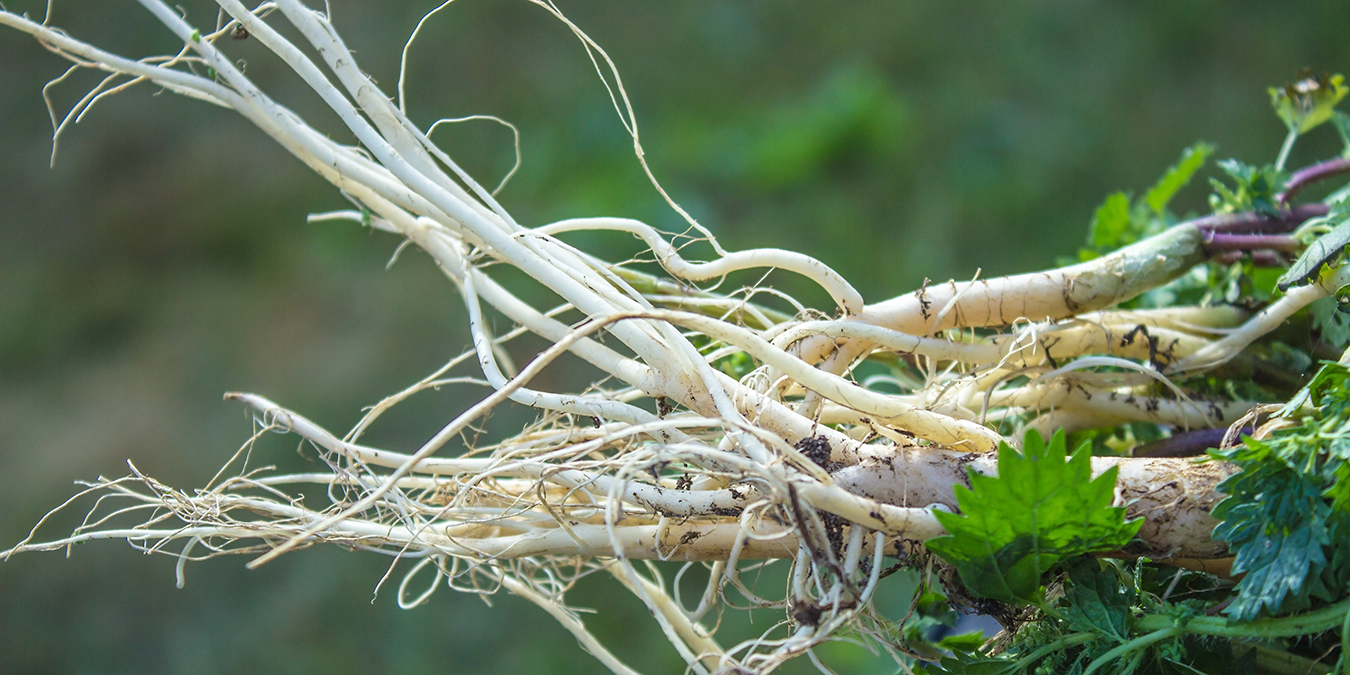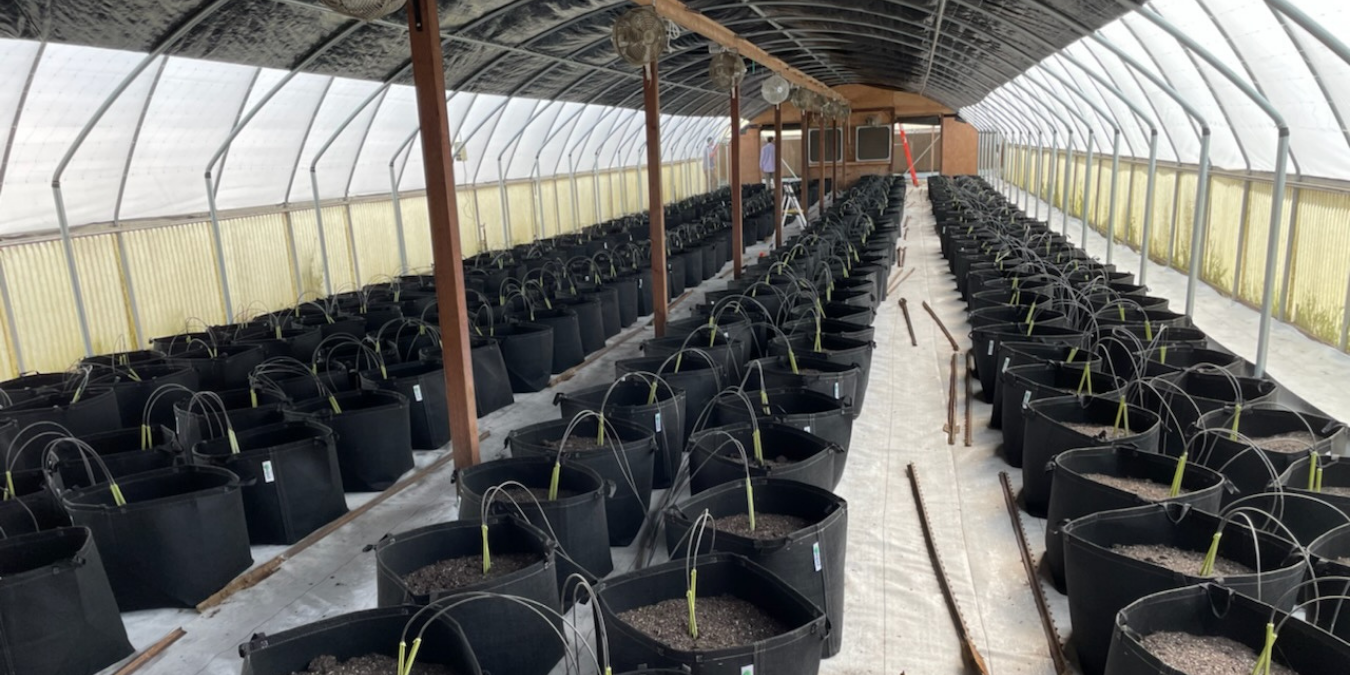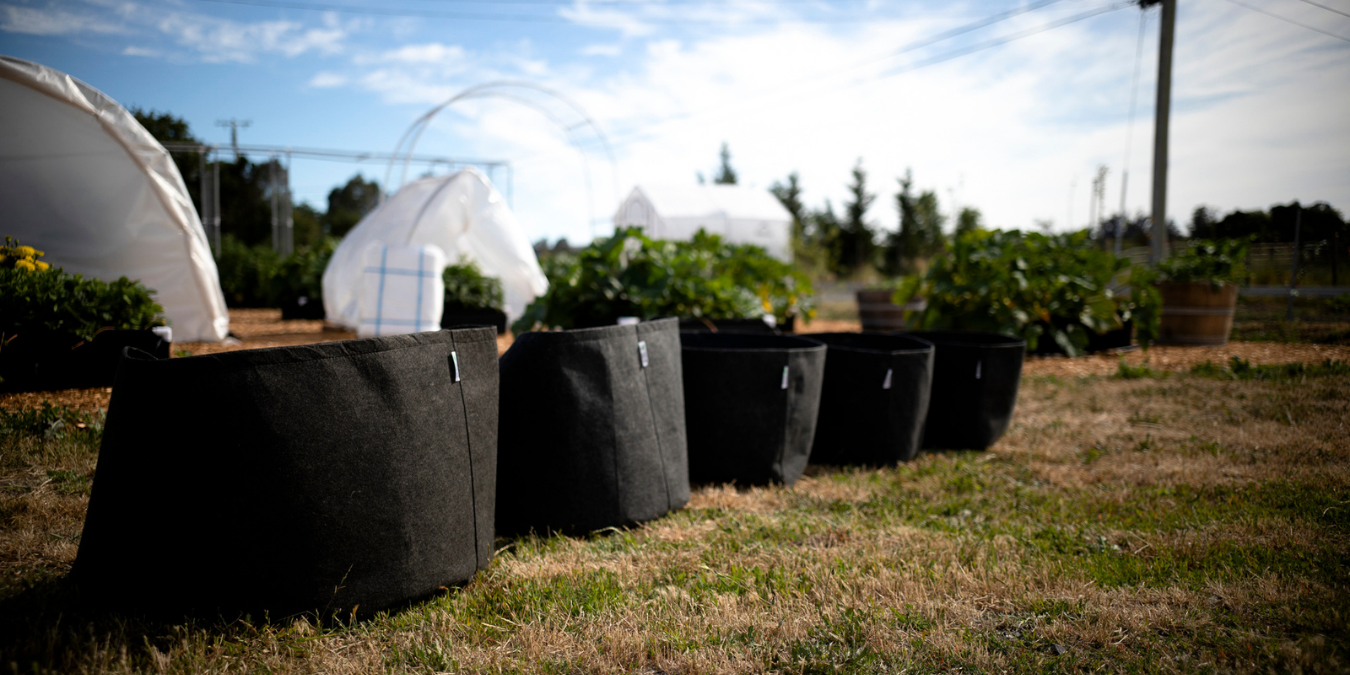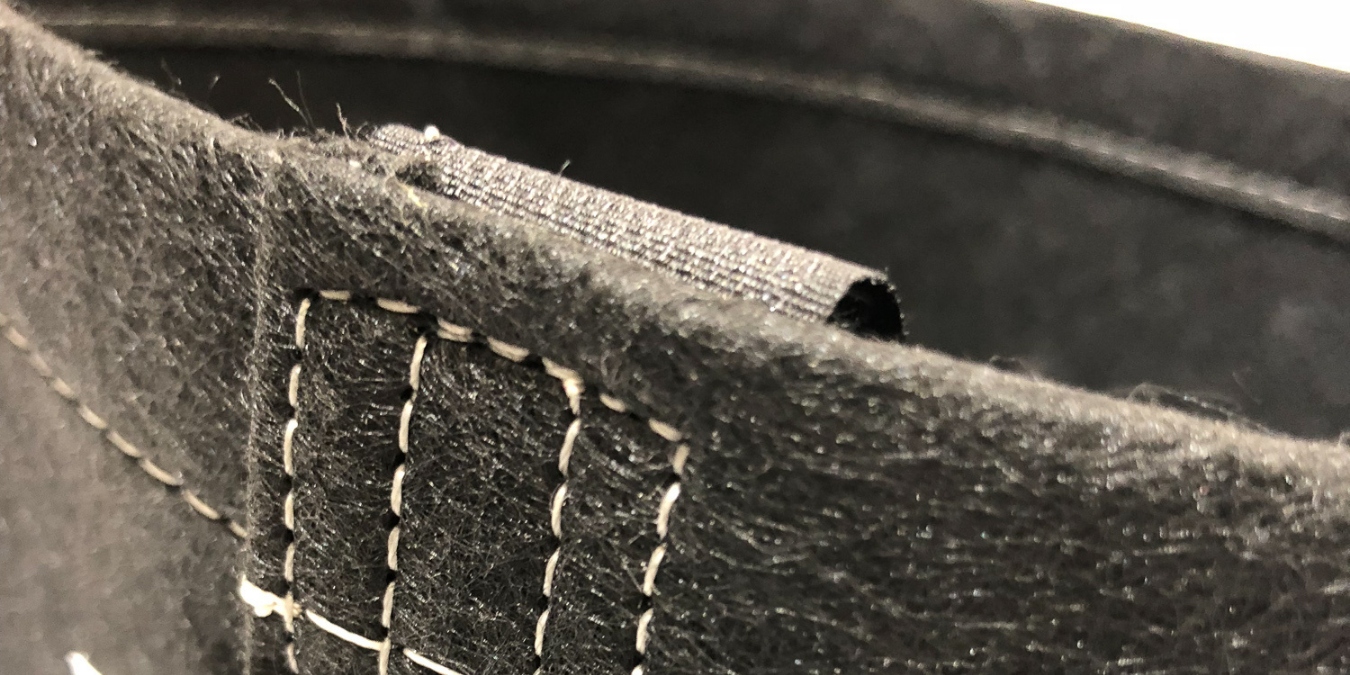Sometimes, despite our best efforts, our plants fail to thrive. Maybe they are discolored, looking droopy, or dropping leaves. This is the time during your grow that you want to get to the root of the problem. By checking out what’s going on in the root system, you may discover the heart of the issue.
Check the Root Ball:
Turn your plant on its side, and gently tap it out of the pot. This will allow you to get a look at how the root system is forming – you want the roots to be tan or white-colored and not bound too tightly together. If your roots are soft, brown, and fall apart easily the root system has likely collapsed and it may take a lot of time and patience to rejuvenate the plant. If your plant is root-bound, you will want to make sure to take some steps to get your plant into a pot that is better suited for it.
GeoPot fabric pots can prevent roots from becoming bound with a process called air root pruning, which allows more fibrous feeder roots to be grown for better nutrient uptake. Find our visual guide to air root pruning.
Check the Soil:
While fresh potting soil is generally clean, the existing soil around the roots when the plant is transplanted into your chosen container can have a poor nutrient balance or even be infested with garden pests. To be on the safe side, it is best to gently tap the root ball to shake off the excess soil when transplanting to give your plant a fresh start. Make sure to re-pot your plant with fresh soil, and if it looks as though the root ball is getting cramped, consider upgrading to a bigger pot. A geotextile pot like the GeoPot is a great choice for many reasons, including its air root pruning capabilities, its reusable and washable material, and the flexibility to move your plants with ease.
Check the Water:
One of the most important things to be aware of when checking your roots is how much water your plant really needs. Overwatering can lead to root-rot, while under-watering can cause your plant to die from dehydration. An easy way to check if your plants may need to be watered is to do a touch-test: poke your finger an inch or more into the soil. If the soil around your plant is dry, it needs to be watered. If the soil is damp, don't water the plant and check again the next day. Once you know your plant, you can make a watering schedule, and if you have any questions about how much or how little to water a specific plant it’s always best to ask the professionals at your local garden center.
Check Your Microbes:
There’s always a little more you can do to give the roots a boost! One aspect of your plant's roots to pay close attention to is the area known as the root zone. This refers to the area of soil and oxygen surrounding the roots of a plant, which is the starting point of a plant's vascular system - water and nutrients are pulled up from the oxygenated soil around this root zone and pumped into all parts of the plant.
Within this zone is the rhizosphere; the narrow region of soil that is directly influenced by root secretions, and associated soil microorganisms known as the root microbiome. Much of the nutrient cycling and disease suppression needed by plants occurs immediately adjacent to roots due to root exudants and communities of microorganisms. You can have a direct effect on this sphere by giving your plants’ soil inoculants for specific microbes.
When it comes down to it, the roots of your plants can be the most important part of your grow. It's vital to ensure that your plant's roots are in great shape so that they are getting all of the water and nutrients they need to thrive. We hope these tips help you get to the root of your plant problems! Find more information on making the most of your container garden.





